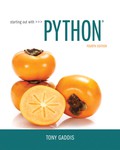
The _______
a. modular
b. procedural
c. functional
d. object-oriented
Procedural Programming:
- Procedural programming language relies on creating functions or procedures.
- It is derived from structural programming, which is also known as imperative programming.
Hence, the correct answer is option “B”.
Explanation of Solution
Procedural Programming:
- The procedural programming usually depends upon procedures or routines or subroutines.
- This programming is centered on procedures or the actions that take place in the program.
- Procedures separate from data while operating on data items, which leads to trouble, and the code becomes more complex.
Example:
Examples for procedural language are as follows:
- C
- Pascal
- FORTRAN
- BASIC
Explanation for incorrect options:
Modular programming is a designing of software that decomposes an entire program into separate sub-programs.
Hence, option “A” is wrong.
Functional programming is designed to evaluate mathematical function that uses expressions instead of statements.
Hence, option “C” is wrong.
Object-oriented programming relies on creating objects that contain data attributes and methods. It combines the data and program into a single object.
Hence, option “D” is wrong.
Want to see more full solutions like this?
Chapter 10 Solutions
EBK STARTING OUT WITH PYTHON
Additional Engineering Textbook Solutions
Starting Out With Visual Basic (8th Edition)
SURVEY OF OPERATING SYSTEMS
Degarmo's Materials And Processes In Manufacturing
INTERNATIONAL EDITION---Engineering Mechanics: Statics, 14th edition (SI unit)
Java How to Program, Early Objects (11th Edition) (Deitel: How to Program)
Introduction To Programming Using Visual Basic (11th Edition)
- Please solve and answer the questions correctly please. Thank you!!arrow_forwardConsidering the TM example of binary sum ( see attached)do the step-by-step of execution for the binary numbers 1101 and 11. Feel free to use the Formal Language Editor Tool to execute it; Write it down the current state of the tape (including the head position) and indicate the current state of the TM at each step.arrow_forwardI need help on inculding additonal code where I can can do the opposite code of MatLab, where the function of t that I enter becomes the result of F(t), in other words, turning the time-domain f(t) into the frequency-domain function F(s):arrow_forward
- Programming Logic & Design ComprehensiveComputer ScienceISBN:9781337669405Author:FARRELLPublisher:Cengage
 EBK JAVA PROGRAMMINGComputer ScienceISBN:9781337671385Author:FARRELLPublisher:CENGAGE LEARNING - CONSIGNMENT
EBK JAVA PROGRAMMINGComputer ScienceISBN:9781337671385Author:FARRELLPublisher:CENGAGE LEARNING - CONSIGNMENT Microsoft Visual C#Computer ScienceISBN:9781337102100Author:Joyce, Farrell.Publisher:Cengage Learning,
Microsoft Visual C#Computer ScienceISBN:9781337102100Author:Joyce, Farrell.Publisher:Cengage Learning,  C++ for Engineers and ScientistsComputer ScienceISBN:9781133187844Author:Bronson, Gary J.Publisher:Course Technology Ptr
C++ for Engineers and ScientistsComputer ScienceISBN:9781133187844Author:Bronson, Gary J.Publisher:Course Technology Ptr C++ Programming: From Problem Analysis to Program...Computer ScienceISBN:9781337102087Author:D. S. MalikPublisher:Cengage Learning
C++ Programming: From Problem Analysis to Program...Computer ScienceISBN:9781337102087Author:D. S. MalikPublisher:Cengage Learning Principles of Information Systems (MindTap Course...Computer ScienceISBN:9781285867168Author:Ralph Stair, George ReynoldsPublisher:Cengage Learning
Principles of Information Systems (MindTap Course...Computer ScienceISBN:9781285867168Author:Ralph Stair, George ReynoldsPublisher:Cengage Learning





